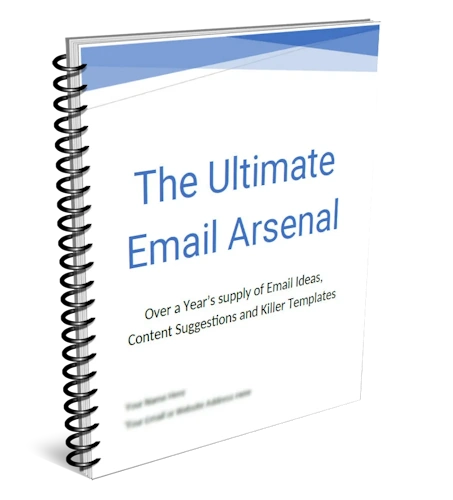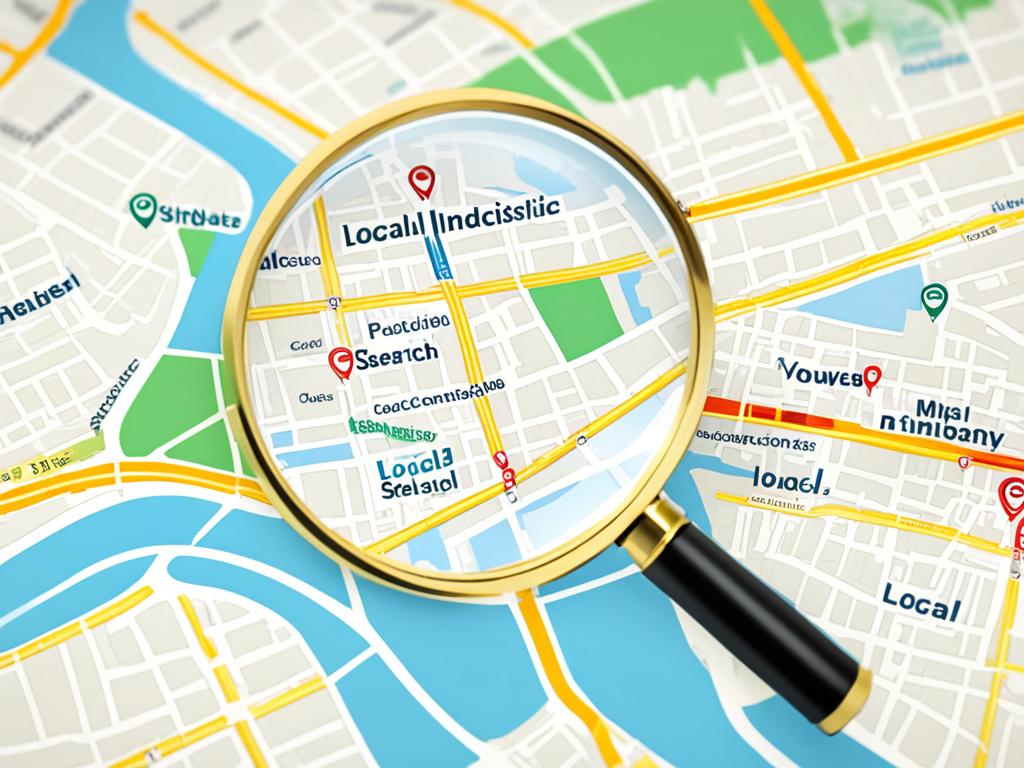Are you struggling to reach potential customers in your local area? Do you feel like your business is being overshadowed by larger competitors? If so, it’s time to unlock the power of local SEO.
Local search is more important now than ever before, with 46% of all Google searches looking for local information. So, if you want to stay relevant and attract local customers, optimizing for local SEO is crucial.
In this comprehensive guide, I will share essential local SEO tips and tools that will help improve your search engine visibility and connect with potential customers in your area. From local search strategies to proven techniques and best practices, we will cover everything you need to know to dominate your local market.
Key Takeaways:
- Optimizing for local SEO is crucial to reach potential customers in your area.
- 46% of all Google searches are seeking local information.
- Local SEO techniques and best practices can improve search engine visibility.
- Stay tuned for essential local SEO tips and tools to maximize your reach.
- Unlock the power of local search engine optimization and dominate your local market.
What is Local SEO and Why is it Important?
Local SEO, or local search engine optimization, is the process of improving search engine visibility for local businesses, primarily those with brick-and-mortar locations. By following local SEO best practices, businesses can increase organic traffic from searches performed by customers in nearby areas.
Local search engines rely on signals such as local content, social profile pages, links, and citations to provide the most relevant local results to users. Optimizing for local SEO is important because it allows businesses to position their products and services to potential customers who are searching for them locally.
„Local SEO is an essential strategy for businesses with physical locations. By optimizing for local search, businesses can tap into a valuable audience actively looking for products or services in their area.“
When customers search for a specific product or service, search engines aim to provide the most relevant and useful results based on the user’s location. By optimizing a website for local search, businesses can increase the chances of their website appearing in front of potential customers who are actively seeking local solutions.
Not only does local SEO help businesses attract local customers, but it also helps build credibility and authority in the local community. By ranking higher in local search results, businesses can establish themselves as trusted and reliable sources for products and services.
Furthermore, optimizing for local search can lead to higher conversion rates. When potential customers find businesses that are nearby and easily accessible, they are more likely to make a purchase or visit the physical location.
In summary, local SEO plays a crucial role in helping businesses maximize their reach and connect with customers in their local area. By implementing effective local SEO strategies, businesses can improve their online visibility, attract more organic traffic, and ultimately increase their chances of success in the competitive local marketplace.
Benefits of Local SEO
| Benefit | Description |
|---|---|
| Increased Visibility | Appear in local search results and reach potential customers in your area. |
| Targeted Traffic | Attract users who are actively seeking products or services locally. |
| Building Credibility | Establish trust and authority in the local community. |
| Higher Conversion Rates | Increase the likelihood of conversions and physical store visits. |
| Competitive Advantage | Outrank competitors and stand out in the local marketplace. |

Local SEO Tips and Best Practices
To optimize for local SEO effectively, businesses should implement the following tips and best practices:
- Google My Business: Create and optimize your Google My Business (GMB) profile by providing accurate and up-to-date information about your business, such as the name, address, phone number, and business hours. Also, regularly post updates, manage customer reviews, and add high-quality images to enhance your GMB profile visibility.
- Social Media Engagement: Engage with your target audience on social media platforms to build brand awareness and drive local traffic to your website. Respond to comments, share relevant content, and encourage users to share their experiences with your business.
- Name, Address, Phone Number (NAP) Consistency: Ensure consistent contact information, such as the business name, address, and phone number, across all online platforms, including your website, social media profiles, and online directories. Inconsistencies can confuse both search engines and customers.
- Online Directories and Citations Optimization: List your business on reputable online directories and ensure accurate and consistent citations across these platforms. This will improve your local search visibility and credibility.
- Local SEO Audit: Conduct a comprehensive local SEO audit to identify areas for improvement and optimize your website for local search. Evaluate your Google My Business profile, on-page SEO elements, citations, and competitor analysis to gain insights into your overall local SEO performance.
- Internal Linking Structure: Improve your website’s internal linking structure to enhance navigation and distribute ranking power among pages. Link relevant pages to each other using descriptive anchor texts containing relevant keywords.
- URL Optimization: Optimize your URLs to include target keywords and make them user-friendly and descriptive. Use hyphens to separate words and organize your website’s content hierarchy effectively.
- Title Tags Optimization: Write compelling and keyword-rich title tags for each page on your website. Keep them concise, under 60 characters, and include relevant local search terms to improve visibility in search engine results.
- Headers Optimization: Use headers (H1, H2, H3) to structure your content and include relevant keywords. This helps search engines understand the context and hierarchy of your information.
- Meta Description Optimization: Craft informative and persuasive meta descriptions that accurately summarize your webpage’s content and include relevant keywords. This can help improve click-through rates from search engine result pages.
- Local Content Creation: Develop location-specific content that caters to the interests and needs of your local audience. Create blog posts, articles, and guides that highlight local events, news, and resources to establish your brand as a local authority.
- Mobile-Friendly Website: Optimize your website for mobile devices to deliver a seamless browsing experience for users on smartphones and tablets. This improves user engagement and helps search engines understand your website’s responsiveness.
- Inbound Links: Earn quality inbound links from reputable websites and local online directories. These links act as indicators of your website’s authority and relevance, thus improving your local search rankings.
By implementing these local SEO tips and best practices, businesses can enhance their online presence, attract local customers, and boost their visibility in local search results.

Optimize Your Google My Business Profile
When it comes to local search visibility, optimizing your Google My Business (GMB) profile is absolutely essential. Your GMB profile is essentially your online business card, providing potential customers with important information and enticing them to choose your business. To ensure that your GMB profile is fully optimized, follow these steps:
- Create or Claim Your Google Business Profile: If you haven’t already, create a Google Business Profile for your business or claim an existing one. This will allow you to manage and update your business information.
- Verify Your Business: Google will require you to verify your business through a postcard, phone call, or email. This step is crucial to ensure that you have control over your GMB profile.
- Provide Accurate and Consistent NAP (Name, Address, Phone Number) Information: Make sure that your business name, address, and phone number are accurate and consistent across all online platforms, including your GMB profile. Consistency is key to establish trust with both customers and search engines.
- Add a Captivating Business Description: Craft a compelling description of your business that includes relevant keywords while informing potential customers about what sets your business apart. Be concise, engaging, and highlight any unique selling points.
- Include High-Quality Images: Visual content is powerful, so make sure to showcase your business with high-quality images. This can include photos of your storefront, products, team, and any other relevant visuals.
- Promote Your Business with Google Posts: Google Posts allow you to share updates, offers, events, and more directly on your GMB profile. Take advantage of this feature to engage with customers and drive traffic to your website or physical location.
- Encourage Customer Reviews: Positive customer reviews not only build trust and credibility but also improve your rankings in local search. Encourage customers to leave reviews on your GMB profile by providing exceptional service and requesting feedback.
- Stay Updated with Google My Business Updates: Google frequently introduces new features and updates for GMB profiles. Make sure to stay informed and leverage these updates to enhance your profile and stay ahead of the competition.
Optimizing your Google My Business profile is a crucial step towards improving your local search visibility and attracting more customers. By following these steps, you can ensure that your business stands out in local search results and maximizes its online presence.
Conduct a Local SEO Audit
Performing a comprehensive local SEO audit is crucial to ensure that your website is optimized for local search and identify areas for improvement. By conducting a local SEO audit, you can gain valuable insights into your website’s performance and make data-driven decisions to enhance your local search engine optimization efforts.
- Google My Business Audit: Evaluate your Google My Business profile to ensure it is fully optimized. Verify that your business information is accurate, including your name, address, phone number (NAP consistency), hours of operation, and business description.
- Google Search Console Audit: Analyze your website’s performance in Google Search Console, examining important data such as crawl errors, indexing issues, and search queries. Identify any technical SEO issues that may be affecting your website’s visibility.
- On-Page SEO Audit: Review the on-page elements of your website, such as URL structure, title tags, headers, and meta descriptions. Optimize these elements to include relevant keywords and improve your website’s visibility in local search results.
- Citation Audit: Check the consistency and accuracy of your business citations across various online directories and platforms. Ensure that your NAP information is consistent to avoid confusion among search engines and potential customers.
- Competitor Analysis: Study your competitors‘ websites and online presence to identify their strengths and weaknesses. Gain insights into their local search strategies and adapt them to enhance your own SEO efforts.
- Website Audit: Evaluate the overall performance and user experience of your website. Analyze factors such as page load speed, mobile-friendliness, site structure, and internal linking to optimize your website for local search.
- Local Search Engine Optimization: Assess your website’s optimization for local search, including your content relevancy, keyword targeting, and local landing pages. Ensure that your website provides valuable information for users searching for local products or services.
Conducting a local SEO audit will enable you to identify any gaps in your current SEO strategy and implement targeted improvements to enhance your website’s visibility in local search results. By continuously monitoring and optimizing your local SEO efforts, you can stay ahead of the competition and attract more local customers.
Improve Your Internal Linking Structure
While external links are important for SEO, improving your internal linking structure can also boost your website’s rankings. Internal linking plays a crucial role in website navigation, information architecture, as well as distributing page authority and ranking power among your web pages.
By strategically linking your web pages internally, you can enhance the user experience, make it easier for search engine crawlers to discover and index your content, and increase the visibility of important pages.
Here are some tips to help you improve your internal linking structure:
- Map out your website architecture: Start by creating a clear and logical structure for your website. This will make it easier for users and search engines to navigate your site and understand the hierarchy of your content. Use descriptive categories and subcategories to organize your pages.
- Link relevant pages together: Identify pages on your website that are closely related in terms of content or topic. Add relevant anchor text links from one page to another to create a connection between them. This will help visitors find related information and strengthen the semantic relevance of your content.
- Use keyword-rich anchor text: When linking internally, use anchor text that contains relevant keywords. This not only helps visitors understand what they can expect when they click on the link but also provides search engine crawlers with valuable context about the linked page.
- Optimize your navigation menu: Ensure that your website’s navigation menu includes important pages and categories. This will provide users with easy access to key sections of your site and distribute link equity throughout your website.
- Implement breadcrumbs: Breadcrumbs are a navigational aid that shows users their current location within your website’s hierarchy. They not only help visitors navigate your site but also provide additional internal linking opportunities.
- Utilize footer and sidebar links: Include internal links in your website’s footer and sidebar sections. This ensures that important pages are easily accessible from any page on your site.
By implementing these strategies, you can improve your website’s internal linking structure, enhance user experience, and increase the visibility of your important pages in search engine rankings.
„Internal linking helps to connect the dots between your web pages, guiding visitors through your site and distributing authority to improve SEO performance.“ – John Smith, SEO Expert
| Benefits of Improving Internal Linking Structure | Actions |
|---|---|
| Enhanced website navigation | Implement clear and descriptive navigation menus, breadcrumbs, and footer/sidebar links. |
| Improved information architecture | Create a logical website structure with well-organized categories and subcategories. |
| Efficient distribution of page authority | Link important pages internally to distribute authority and improve their visibility. |
| Boosted ranking power for key pages | Use keyword-rich anchor text within internal links to reinforce the relevance of important pages. |
Optimize URL, Title Tags, Headers, Meta Description, and Content
Optimizing various elements of your website is essential for local SEO. By strategically optimizing the URL, title tags, headers, meta description, and content, you can improve your website’s visibility in local search results. Incorporating high-volume keywords and geographic search phrases into these elements will help attract more qualified local traffic. Here are some tips to optimize these elements:
URL Optimization:
When it comes to URLs, keep them concise, descriptive, and keyword-rich. Include relevant keywords that capture the essence of your page’s content. Avoid using complex or random strings of characters. Instead, create clear and organized URLs that are easy for both search engines and users to understand. For example:
Bad URL: yourwebsite.com/page1/?id=12345
Good URL: yourwebsite.com/local-seo-tips
Title Tags Optimization:
Title tags are crucial for both search engine optimization and user experience. They provide a concise summary of your page’s content and appear as the clickable headline in search engine results. When optimizing title tags for local SEO, make sure to include relevant high-volume keywords and geographic search phrases that accurately describe your page’s content and target local users. Aim for title tags that are compelling, informative, and concise. For example:
Bad Title Tag: Welcome to our website
Good Title Tag: Best Local SEO Tips for Small Businesses | Your Website
Headers Optimization:
Headers play a crucial role in organizing your content and signaling its relevancy to search engines. Each page should have a single H1 tag that clearly and concisely describes the main topic of the page. Use H2, H3, and other heading tags to structure your content hierarchically and incorporate relevant keywords naturally. This not only helps with SEO but also improves the overall readability and user experience. For example:
H1: Local SEO Best Practices for Small Businesses
H2: Importance of On-Page Optimization
H3: Optimizing Meta Tags for Local Search
Meta Description Optimization:
Meta descriptions provide a summary of your page’s content and appear as the brief description below the title tag in search engine results. While meta descriptions don’t directly impact SEO rankings, they play a crucial role in enticing users to click on your website. When optimizing meta descriptions for local SEO, use persuasive language, include relevant keywords and geographic search phrases, and keep them under 160 characters. For example:
Bad Meta Description: We offer quality services at affordable prices. Contact us today!
Good Meta Description: Boost your local search engine visibility with our expert local SEO services. Contact us today for a free consultation!
Content Optimization:
One of the most important aspects of local SEO is creating high-quality, relevant, and engaging content. Ensure that your website’s content is optimized for local search by incorporating high-volume keywords and geographic search phrases naturally throughout the text. Remember to focus on providing value to your audience and addressing their specific local needs and concerns. Diversify your content by incorporating different formats such as blog posts, infographics, videos, and customer testimonials. This will not only improve your website’s visibility but also help establish credibility and authority in your local market.
By optimizing the URL, title tags, headers, meta description, and content of your website, you can significantly enhance your local SEO efforts and attract more qualified local traffic. These elements work together to improve both search engine visibility and user experience, ultimately driving more targeted visitors to your website.
Add Location Pages and Create Local Content
To further optimize your website for local SEO, consider adding location pages and creating local content. Location pages provide readers with information about your various locations, including addresses, phone numbers, store hours, and unique store descriptions. These pages can cater to location-based traffic and help improve your visibility in local search results.
Creating local content that resonates with your local audience can also help attract and engage potential customers. Consider writing blog posts, product descriptions, how-to guides, and tutorials that highlight local events, news, and educational content related to your industry.
By adding location pages and creating local content, you can provide valuable location-specific information to your audience and increase your chances of appearing in local search queries.
| Benefits of Adding Location Pages and Creating Local Content | Examples |
|---|---|
| Increases local search visibility | Writing blog posts about local events and news |
| Attracts and engages local audience | Creating how-to guides related to local interests |
| Improves local search rankings | Optimizing location pages with relevant keywords |
| Provides location-specific information | Adding addresses, phone numbers, and store hours to location pages |
Remember, location pages and local content should be optimized for both search engines and the local audience. By providing valuable and relevant information specific to each location, you can enhance your local SEO efforts and better cater to the needs of your local customers.
Conclusion
Local SEO plays a crucial role in the digital marketing strategy of businesses with physical locations. By optimizing for local search, businesses can enhance their visibility in local search engine results, attract qualified organic traffic, and connect with potential customers actively seeking products or services in their area. Implementing effective local SEO strategies and best practices is essential for businesses to maximize their reach and establish dominance in their local market.
Don’t miss out on the immense potential of local SEO. By following the tips and techniques discussed in this comprehensive guide, you can unlock the power of local search engine optimization and take your business to new heights. Whether it’s optimizing your Google My Business profile, conducting a thorough local SEO audit, improving your internal linking structure, or optimizing various elements of your website, every step you take towards local SEO success will yield fruitful results.
Remember, local SEO is not a one-time task. It requires consistent effort and ongoing optimization to stay ahead of the competition. Keep track of the latest trends and updates in the field of local SEO, and adapt your strategies accordingly. By staying proactive and continuously refining your approach, you can ensure that your business remains visible and relevant to local customers in today’s digital landscape.
FAQ
What is local SEO?
Local SEO, or local search engine optimization, is the process of improving search engine visibility for local businesses, primarily those with brick-and-mortar locations. It involves optimizing various elements of a website to increase organic traffic from searches performed by potential customers in nearby areas.
Why is local SEO important?
Local SEO is important because it allows businesses to position their products and services to potential customers who are searching for them locally. With 46% of all Google searches looking for local information, optimizing for local SEO is critical for businesses to stay relevant and reach potential customers in their area.
How can I optimize my Google My Business profile?
To optimize your Google My Business (GMB) profile, you can follow these steps:
1. Claim and verify your GMB profile.
2. Provide accurate and up-to-date information about your business, including your name, address, phone number (NAP), and business hours.
3. Add high-quality images and videos to showcase your products, services, and premises.
4. Encourage customers to leave reviews and respond to them promptly.
5. Post regular updates, offers, and events through Google Posts.
How do I perform a local SEO audit?
Performing a comprehensive local SEO audit involves several steps, including:
1. Auditing your Google My Business profile to ensure it is fully optimized.
2. Conducting a Google Search Console audit to identify any technical issues that may be affecting your local SEO performance.
3. Performing an on-page SEO audit to optimize your website’s content and structure.
4. Auditing your online citations and directories to ensure consistent and accurate name, address, and phone number (NAP) information.
5. Analyzing your competitors‘ local SEO strategies to identify areas for improvement.
How can I improve my internal linking structure?
Improving your internal linking structure can boost your website’s rankings and improve website navigation. You can improve your internal linking structure by:
1. Including relevant internal links in your content to guide users to other relevant pages on your website.
2. Using descriptive anchor text that accurately describes the linked page.
3. Ensuring a logical and intuitive hierarchy of links throughout your website.
4. Distributing page authority and ranking power among pages by strategically linking to important and high-value pages.
What elements of my website should I optimize for local SEO?
To optimize your website for local SEO, you should consider optimizing the following elements:
1. URL structure: Include geographic search phrases in your URLs where applicable.
2. Title tags: Incorporate high-volume keywords and geographic search phrases into your title tags.
3. Headers: Use headers (H1, H2, H3, etc.) to structure your content and include relevant keywords in them.
4. Meta description: Write compelling meta descriptions that include relevant keywords and encourage clicks from users.
5. Content: Create high-quality, localized content that answers the questions and addresses the needs of your local audience.
What are location pages and why are they important for local SEO?
Location pages are webpages that provide information about your various business locations, including addresses, phone numbers, store hours, and unique descriptions for each location. These pages are important for local SEO because they cater to location-based traffic and help improve your visibility in local search results. They also provide valuable information to potential customers who are searching for your products or services in specific geographical areas.

The Ulitmate Email Arsenal
„Banish Email Writer’s Block: Fuel Your Success With A Year’s Supply Of Email Subject Ideas & Conversion Driven Templates!“
- Over 52 Genius Email Subject Ideas & Content, one for every week of the year, paired seamlessly with over 52 high-converting email templates…
- Never be Stuck for Ideas Again: 40+ page guide, packed with over 8000 words of actionable insights, strategies, and insider tips to save you time…
- Get Ahead of Your Competitors: Unleash consistent engagement and keep your audience hooked, week after week…


